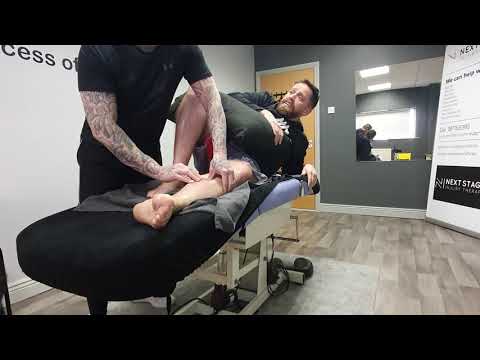What You Need to 대구출장 Learn About Complementary Massages
While a massage can seem purely for pampering yourself, it is actually a healthy and effective method to reduce tension and stress. It not only promotes relaxation and relaxation, but it also helps the immune system by increasing blood flow to the affected areas. Massage can be used to alleviate discomfort and treat injuries. It improves mobility, decreases swelling and stiffness in muscles. Here are some things you need to know about complementary massages.
Structural Integration is an advanced type of massage. Practitioners employ a variety of hand and soft tissue techniques to manipulate the myofascial system of the body. This system is what surrounds muscles and gives them shape. To relieve tension, therapists trained in this technique can employ slow, deep stretching movements. Therapists may apply pressure to various points on the body and ask clients to move whenever they apply pressure. The results of the structural integration session are long-lasting and extremely beneficial.
Structural Integration is a hands-on approach to soft tissue. Depending on the degree of certification, the patient may be seated or standing during the session. Although it is difficult to determine the level of experience required by a professional in this field, it is crucial to remember that a graduate of a CBSI-certified college has met the highest standards for competence in the practice of. According to the U.S. Bureau of Labor Statistics the growth of jobs in massage-related professions will grow by 21% by 2029. This is partly due to an increasing interest in natural health and an ageing population.
Another type of massage involves manipulating the myofascial system of the body. It focuses on the fascia, which surrounds muscles and gives the body its shape. Practitioners can employ deep, slow stretching movements and constant pressure. Practitioners might require clients to move as they apply pressure. The aim is to align the body and allow it to move freely. This massage is similar to an exercise session however, there are some differences.
A typical structural integration session consists of ten to thirteen sessions that build on each others. The practitioner employs different techniques to treat the myofascial system in the body to achieve a healthy, balanced posture. The body's muscles and fascia are linked by an invisible ring. The whole structure is therefore integrally connected to the body's skeleton. It is therefore essential for your health that you are in good physical health.
A typical structural integration session includes 10 to 13 sessions. Each session builds on the one before. This type of massage uses different pressure levels and manual manipulation to balance the body's structural integrity. A practitioner may focus on various parts of the body in order to address various issues. This kind of treatment could be beneficial for those with complex medical background. A practitioner can also prescribe massage therapy that is suitable for those with a weak or injured back.
A typical structural integration session comprises between 10 and 13 sessions. Each session builds upon the previous and focuses on the same muscles. The practitioner uses the manual manipulation and pressure to align and balance the body's structure throughout the course of treatment. The body is divided into layers and segments. The practitioner will assess your posture and review your personal experience to determine which region of your body needs to be addressed. A structural integration session includes instruction in movement to help improve your movement habits.
Unlike regular massages structural integration is a rigorous treatment strategy. Each session builds upon the previous. It is usually between 10 to 13 sessions. It employs gentle pressure to target the muscles throughout each layer of the body. The structural integration specialist will assess your personal background and habits of work and then apply the appropriate amount of pressure to the targeted areas. The client must be aware of any pain they're experiencing during the session. It is essential to feel comfortable during the treatment since this will help the practitioner adjust to the body's unique posture.
A typical structural integration session comprises of between ten and thirteen sessions. Each session builds upon the previous session. This hands-on approach to manipulating soft tissue involves the use of different pressures and manual manipulation to improve structural integrity. The body is divided into segments and layers. This type of massage usually involves 10 to 13 sessions that last between two and four hours per session. In addition structural integration practitioners, they can also incorporate movement education into their practices.
